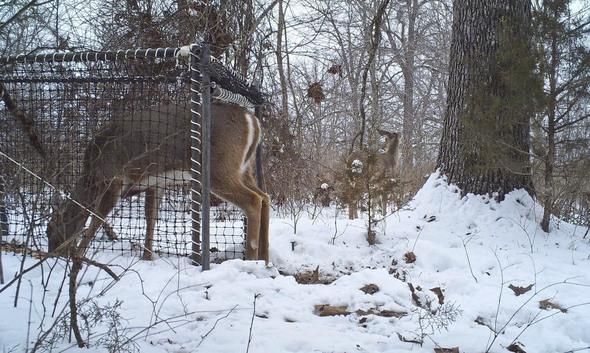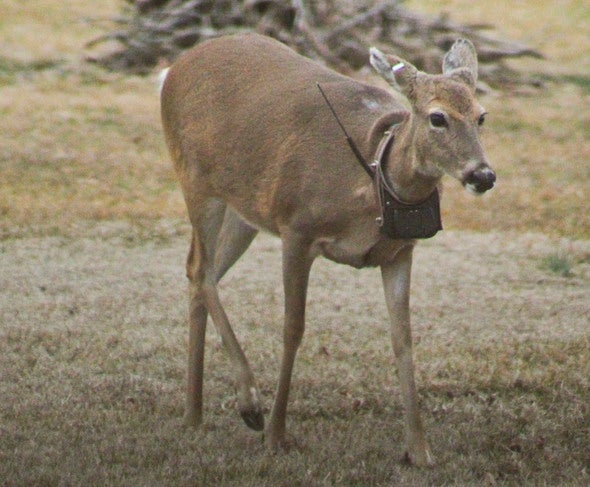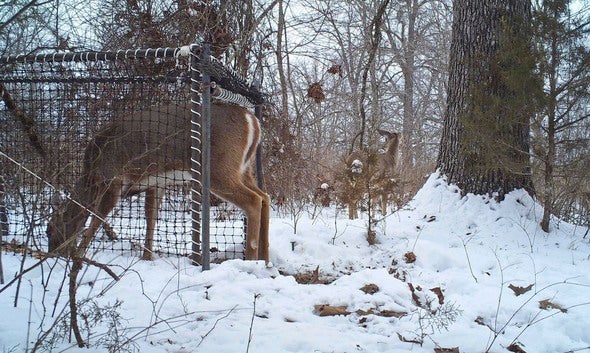
Xplor reconnects kids to nature and helps them find adventure in their own backyard. Free to residents of Missouri.


































Stay in Touch with MDC news, newsletters, events, and manage your subscription

Xplor reconnects kids to nature and helps them find adventure in their own backyard. Free to residents of Missouri.

A monthly publication about conservation in Missouri. Started in 1938, the printed magazine is free to residents of Missouri.




King City, Mo. – Biologists for the Missouri Department of Conservation (MDC) are learning more about white-tailed deer survival, reproduction and movement as a five-year study progresses. The new study utilizes computer, telemetry and satellite technology to track deer in partnership with researchers at the University of Missouri at Columbia (UMC).
Researchers are currently tracking 90 deer wearing collars using Global Positioning System (GPS) technology. Crews from January through March trapped deer and placed collars on them. Transmitters on the collars give satellites readings on a deer's movements, and biologists are able to download that data to computers. They can map each collared deer's travels in fields and forests, or if movement stops, note mortality.
The trapping was done in one focus area in northwest Missouri and another in the Ozarks. Those study areas will provide deer herd trends statewide for both agriculture and forest areas. The information will help MDC manage the state's deer herd to benefit people and wildlife.
"We want to make sure we're using the most up-to-date information for current conditions," said Emily Flinn, MDC deer biologist. "This will help us manage for a sustainable, healthy deer population."
Missourians care about wildlife, and deer hold a special place in the hearts of hunters and wildlife watchers. More than 500,000 Missouri citizens enjoy deer hunting. Deer hunting generates more than $1 billion in the state's economic activity annually.
MDC will use information from the current study to help guide decisions on deer herd management. Survival data will include deer harvested by hunters as well as those dying from other causes. Biologists will use information to help guide policy decisions about regulations and permit allocations, such as how many antlerless deer permits are allowed for a specific county. MDC collects and evaluates data on deer annually.
But this is the first extensive tracking research project since the early 1990s.
"The deer population was different then," Flinn said, "and even the hunter population was different back then."
The GPS tracking technology is a centerpiece for the study. GPS transmitters have a battery life of three or four years. Biologists can release the collar at any time from a deer via computer.
Trapped deer were also given metal ear tags. Biologists also obtained tissue samples for a DNA database. For some trapped deer, they obtained measurements of hind legs, neck girth or antler size. Anyone finding a deer collar or tag is asked to utilize information on devices to contact MDC.
A high-tech component is internal transmitting devices that enable biologists to tell if a doe has given birth to a fawn. MDC staff will be able to find fawns shortly after birth and outfit them with special transmitter collars that expand as the deer grows.
The study will not affect hunting. Hunters will be asked to harvest deer as they normally would, even if one has a collar. Harvest mortality is valuable to the study.
One deer has already surprised biologists. An adult doe given a collar in early March has traveled more than eight miles. Adult deer are normally expected to roam within about a one-mile home range, Flinn said.
"Every day we're getting more information," she said.
The northwest Missouri portion of the study is focused in rural areas of Nodaway, Gentry, Andrew and DeKalb counties. Concurrently, a similar research is underway in Douglass, Howell, Texas and Wright counties in the southern Missouri Ozarks. The deer research project is funded with assistance from Federal Aid in Wildlife Restoration Funds.
For information about deer management in Missouri, contact Flinn at emily.flinn@mdc.mo.gov or 573-815-7901, ext. 3619. Jon McRoberts is project leader for the UMC research team and can be contacted at mcrobertsj@missouri.edu or 573-881-1978.
To learn more about Missouri's deer hunting heritage, management and opportunities, visit mdc.mo.gov/hunting-trapping/deer-hunting.